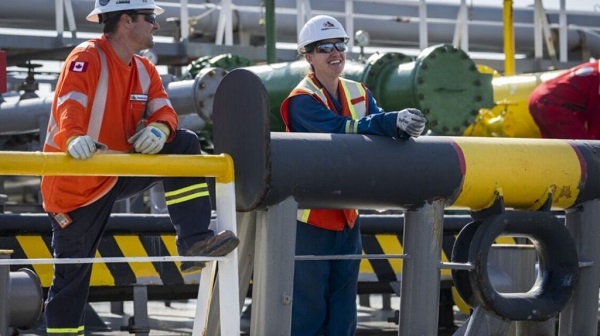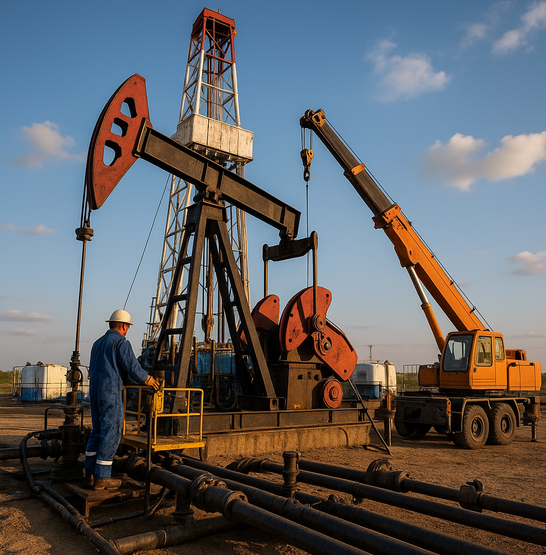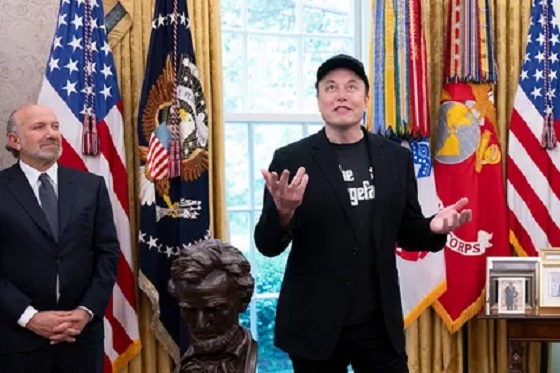Economy
Canada as an energy superpower would empower thousands of families for generations

From Resource Works
By Geoff Russ
What does the future hold if Canada can become an energy superpower?
For the past 40 years, the fortunes of countless Canadian communities have risen and fallen with the strength of our energy sector. Oil booms in Alberta generated enormous prosperity and created hundreds of thousands of jobs, invigorating resource towns and rural Canada more generally. The existence of nuclear energy in Ontario requires thousands of workers, and its future expansion will generate thousands more. Energy is the economic lifeline for thousands of young and maturing families, but they are not invulnerable.
Global market swings have buffeted these jobs, as have changing provincial and federal policies, as well as international political shifts.
In the middle of the 1980s, oil prices collapsed and shocked Alberta and employment rose from four to 10 per cent as oil and gas jobs disappeared overnight. This was echoed in 2008 and 2014 when lurches in oil prices hit communities in places like Fort McMurray in Alberta, Fort St. John in northern British Columbia, and Estevan, Saskatchewan.
Every cycle of boom and bust was accompanied by hardship, but the people in these communities proved their resilience by rallying and holding onto their livelihoods.
Today, the Canadian energy sector still supports about 200,000 workers with direct employment and up to 400,000 more indirectly. However, as in years past, these workers and their families are subject to global tides, and none has been dictating those flows more than President Donald Trump and his wielding of tariffs to reshape the world economy.
The correct response is for Canada to diversify its trade and expand its energy infrastructure to grow the reach of Canadian energy, our most valuable and important export, and one of the most plentiful job creators in our arsenal. Fortunately, both of Canada’s two major parties, the Liberals and Conservatives, have reached a strong measure of agreement on this matter.
Our rookie prime minister, Mark Carney, has put forward a plan to transform Canada into an “Energy Superpower”. His plan is intended to ensure Canada’s economic security through new trade partnerships around the world and make all forms of Canadian energy competitive.
Some provinces are already charging ahead, with Ontario’s provincial government announcing plans to build Canada’s first small modular reactor (SMR) by 2030, which is projected to power over 300,000 homes and create up to 18,000 jobs. The existing Bruce Power facility in Kincardine already supports 4,200 jobs, and is a pillar of the province’s energy grid.
Crucial to Carney’s plan are faster, streamlined project reviews paired with true Indigenous partnerships, along with plans for a national energy corridor. This could have a transformative impact on the security and health of energy-centric communities. Moving beyond the debate about questioning the obvious need for new projects towards focusing on execution is a welcome breath of fresh air.
There are concerns in some communities about how shortcutting the consultation process and existing oversights may impact local communities, especially Indigenous groups. Resolving these in an equitable and permanent manner will be part of this positive transformation, setting new precedents for economic development in Canada that includes meaningful considerations and involvement for the growing Indigenous economies in BC and across the country.
When it comes to people, however, the mounting job losses over the uncertain economic climate make it imperative to protect jobs and clear the way for new ones. The impact of resource projects on communities like Hope have demonstrated how a reliable industry empowers families. Over 5,400 jobs are created for every $1 billion spent in the oil and gas sector.
The route of the Trans Mountain pipeline ran through Hope, and it revitalized the local economy with job creation and renewal. Pipeline workers not only brought money into Hope, but sprang into action to assist in local firefighting and flood repairs, revealing how the energy sector brings far more to communities than money.
Emulating this across the board is a complicated but essential task. The tightrope between environmental protections and resource development is a delicate one, but Canada has no choice but to walk it with purpose.
Prime Minister Carney’s pledge to make Canada an “Energy Superpower” will mean making choices about economic power, job creation, and locking Canada into its seat at the global energy table.
That means collaboration with people, respecting Indigenous rights, and anchoring policy in the experiences of workers and their families. Trump’s shakeup of the global economy is fraught with peril, but for Canada, it should bring opportunity for a fresh start.
Most importantly, however, it would ensure that hundreds of thousands more Canadians and their families, as well as their communities, can look forward to a bright future.
Carbon Tax
Canada’s Carbon Tax Is A Disaster For Our Economy And Oil Industry

From the Frontier Centre for Public Policy
By Lee Harding
Lee Harding exposes the truth behind Canada’s sky-high carbon tax—one that’s hurting our oil industry and driving businesses away. With foreign oil paying next to nothing, Harding argues this policy is putting Canada at a major economic disadvantage. It’s time to rethink this costly approach.
Our sky-high carbon tax places Canadian businesses at a huge disadvantage and is pushing investment overseas
No carbon tax will ever satisfy global-warming advocates, but by most measures, Canada’s carbon tax is already too high.
This unfortunate reality was brought to light by Resource Works, a B.C.-based non-profit research and advocacy organization. In March, one of their papers outlined the disproportionate and damaging effects of Canada’s carbon taxes.
The study found that the average carbon tax among the top 20 oil-exporting nations, excluding Canada, was $0.70 per tonne of carbon emissions in fiscal 2023. With Canada included, that average jumps to $6.77 per tonne.
At least Canada demands the same standards for foreign producers as it does for domestic ones, right? Wrong.
Most of Canada’s oil imports come from the U.S., Saudi Arabia, and Nigeria, none of which impose a carbon tax. Only 2.8 per cent of Canada’s oil imports come from the modestly carbon-taxing countries of the U.K. and Colombia.
Canada’s federal consumer carbon tax was $80 per tonne, set to reach $170 by 2030, until Prime Minister Mark Carney reduced it to zero on March 14. However, parallel carbon taxes on industry remain in place and continue to rise.
Resource Works estimates Canada’s effective carbon tax at $58.94 per tonne for fiscal 2023, while foreign oil entering Canada had an effective tax of just $0.30 per tonne.
“This results in a 196-fold disparity, effectively functioning as a domestic tariff against Canadian oil production,” the research memo notes. Forget Donald Trump—Ottawa undermines our country more effectively than anyone else.
Canada is responsible for 1.5 per cent of global CO2 emissions, but the study estimates that Canada paid one-third of all carbon taxes in 2023. Mexico, with nearly the same emissions, paid just $3 billion in carbon taxes for 2023-24, far less than Canada’s $44 billion.
Resource Works also calculated that Canada alone raised the global per-tonne carbon tax average from $1.63 to $2.44. To be Canadian is to be heavily taxed.
Historically, the Canadian dollar and oil and gas investment in Canada tracked the global price of oil, but not anymore. A disconnect began in 2016 when the Trudeau government cancelled the Northern Gateway pipeline and banned tanker traffic on B.C.’s north coast.
The carbon tax was introduced in 2019 at $15 per tonne, a rate that increased annually until this year. The study argues this “economic burden,” not shared by the rest of the world, has placed Canada at “a competitive disadvantage by accelerating capital flight and reinforcing economic headwinds.”
This “erosion of energy-sector investment” has broader economic consequences, including trade balance pressures and increased exchange rate volatility.
According to NASA, Canadian forest fires released 640 million metric tonnes of carbon in 2023, four times the amount from fossil fuel emissions. We should focus on fighting fires, not penalizing our fossil fuel industry.
Carney praised Canada’s carbon tax approach in his 2021 book Value(s), raising questions about how long his reprieve will last. He has suggested raising carbon taxes on industry, which would worsen Canada’s competitive disadvantage.
In contrast, Conservative leader Pierre Poilievre argued that extracting and exporting Canadian oil and gas could displace higher-carbon-emitting energy sources elsewhere, helping to reduce global emissions.
This approach makes more sense than imposing disproportionately high tax burdens on Canadians. Taxes won’t save the world.
Lee Harding is a research fellow for the Frontier Centre for Public Policy.
Business
Canada’s loyalty to globalism is bleeding our economy dry

This article supplied by Troy Media.
Trump’s controversial trade policies are delivering results. Canada keeps playing by global rules and losing
U.S. President Donald Trump’s brash trade agenda, though widely condemned, is delivering short-term economic results for the U.S. It’s also revealing the high cost of Canada’s blind loyalty to globalism.
While our leaders scold Trump and posture on the world stage, our economy is faltering, especially in sectors like food and farming, which have been sacrificed to international agendas that don’t serve Canadian interests.
The uncomfortable truth is that Trump’s unapologetic nationalism is working. Canada needs to take note.
Despite near-universal criticism, the U.S. economy is outperforming expectations. The Federal Reserve Bank of Atlanta projects 3.8 per cent second-quarter GDP growth.
Inflation remains tame, job creation is ahead of forecasts, and the trade deficit is shrinking fast, cut nearly in half. These results suggest that, at least in the short term, Trump’s economic nationalism is doing more than just stirring headlines.
Canada, by contrast, is slipping behind. The economy is contracting, manufacturing is under pressure from shifting U.S. trade priorities, and food
inflation is running higher than general inflation. One of our most essential sectors—agriculture and food production—is being squeezed by rising costs, policy burdens and vanishing market access. The contrast with the U.S. is striking and damning.
Worse, Canada had been pushed to the periphery. The Trump administration had paused trade negotiations with Ottawa over Canada’s proposed digital services tax. Talks have since resumed after Ottawa backed away from implementing it, but the episode underscored how little strategic value
Washington currently places on its relationship with Canada, especially under a Carney-led government more focused on courting Europe than securing stable access to our largest export market. But Europe, with its own protectionist agricultural policies and slower growth, is no substitute for the scale and proximity of the U.S. market. This drift has real consequences, particularly for
Canadian farmers and food producers.
The problem isn’t a trade war; it’s a global realignment. And while Canada clings to old assumptions, Trump is redrawing the map. He’s pulling back from institutions like the World Health Organization, threatening to sever ties with NATO, and defunding UN agencies like the Food and Agriculture Organization (FAO), the global body responsible for coordinating efforts to improve food security and support agricultural development worldwide. The message is blunt: global institutions will no longer enjoy U.S. support without measurable benefit.
To some, this sounds reckless. But it’s forcing accountability. A senior FAO official recently admitted that donors are now asking hard questions: why fund these agencies at all? What do they deliver at home? That scrutiny is spreading. Countries are quietly realigning their own policies in response, reconsidering the cost-benefit of multilateralism. It’s a shift long in the making and long resisted in Canada.
Nowhere is this resistance more damaging than in agriculture. Canada’s food producers have become casualties of global climate symbolism. The carbon tax, pushed in the name of international leadership, penalizes food producers for feeding people. Policies that should support the food and farming sector instead frame it as a problem. This is globalism at work: a one-size-fits-all policy that punishes the local for the sake of the international.
Trump’s rhetoric may be provocative, but his core point stands: national interest matters. Countries have different economic structures, priorities and vulnerabilities.
Pretending that a uniform global policy can serve them all equally is not just naïve, it’s harmful. America First may grate on Canadian ears, but it reflects a reality: effective policy begins at home.
Canada doesn’t need to mimic Trump. But we do need to wake up. The globalist consensus we’ve followed for decades is eroding. Multilateralism is no longer a guarantee of prosperity, especially for sectors like food and farming. We must stop anchoring ourselves to frameworks we can’t influence and start defining what works for Canadians: secure trade access, competitive food production, and policy that recognizes agriculture not as a liability but as a national asset.
If this moment of disruption spurs us to rethink how we balance international cooperation with domestic priorities, we’ll emerge stronger. But if we continue down our current path, governed by symbolism, not strategy, we’ll have no one to blame for our decline but ourselves.
Dr. Sylvain Charlebois is a Canadian professor and researcher in food distribution and policy. He is senior director of the Agri-Food Analytics Lab at Dalhousie University and co-host of The Food Professor Podcast. He is frequently cited in the media for his insights on food prices, agricultural trends, and the global food supply chain
Troy Media empowers Canadian community news outlets by providing independent, insightful analysis and commentary. Our mission is to support local media in helping Canadians stay informed and engaged by delivering reliable content that strengthens community connections and deepens understanding across the country
-

 Daily Caller1 day ago
Daily Caller1 day agoTrump’s One Big Beautiful Bill Resets The Energy Policy Playing Field
-

 Agriculture2 days ago
Agriculture2 days agoLacombe meat processor scores $1.2 million dollar provincial tax credit to help expansion
-

 Crime2 days ago
Crime2 days agoThe Left Thinks Drug Criminalization Is Racist. Minorities Disagree
-

 Business2 days ago
Business2 days agoDallas mayor invites NYers to first ‘sanctuary city from socialism’
-

 Alberta Sports Hall of Fame and Museum2 days ago
Alberta Sports Hall of Fame and Museum2 days agoAlberta Sports Hall of Fame 2025 Inductee profiles – Alpine Skiing Athlete – Brady Leman
-

 Business20 hours ago
Business20 hours agoThe Digital Services Tax Q&A: “It was going to be complicated and messy”
-

 Carbon Tax1 day ago
Carbon Tax1 day agoCanada’s Carbon Tax Is A Disaster For Our Economy And Oil Industry
-

 International20 hours ago
International20 hours agoElon Musk forms America Party after split with Trump




